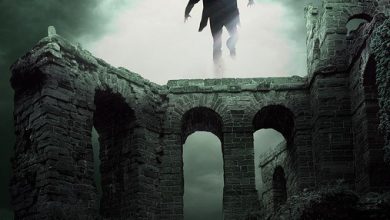Leiningen Versus the Ants by Carl Stephenson is a famous short story known for its gripping narrative, suspenseful atmosphere, and portrayal of human resilience and ingenuity in the face of overwhelming natural forces. It has been widely anthologized and remains a popular classic in the genre of adventure and survival literature.
Leiningen Versus the Ants | Summary
“Leiningen Versus the Ants” is a riveting short story set in the heart of the Brazilian rainforest during the early 20th century. The story revolves around a strong-willed plantation owner named Charles Leiningen, who operates a vast and prosperous plantation in the region. One day, he receives news of a daunting and potentially catastrophic threat: a massive swarm of army ants, millions in number, is advancing through the jungle, devastating everything in its path. Leiningen, a strong and resourceful individual, understands that he must move immediately to safeguard his plantation and everything he has worked for. He is warned by a neighboring plantation owner, Herr Siedler, to evacuate immediately, as the army ants are notoriously relentless and almost impossible to stop. Leiningen, on the other hand, is not one who backs down from an obstacle, and he resolves to stay and face the approaching supposed tragedy straight on.
We discover more about the character of Leiningen as the narrative progresses. He is a realistic and strategic thinker who is well-known for his perseverance and problem-solving talents. Leiningen feels confident in his abilities to outsmart and outlast the army ants since he has encountered and overcome several trials in the past. Leiningen begins to prepare his plantation for the incoming swarm. He enlists the help of his capable workforce and starts implementing his ingenious plan. He first orders the construction of a deep and wide trench around the perimeter of his land, filling it with water to create a formidable barrier. Next, he clears all the vegetation and combustible materials around the trench to create a buffer zone, making it difficult for the ants to find food and sustenance near his plantation.
Realizing that the ants could still find ways to cross the trench, Leiningen devises a secondary line of defense. He orders his workers to construct a ring of fire around the plantation, hoping that the flames will deter the ants from advancing any further. The workforce labors day and night to create this fiery barricade, using wood, gasoline, and other flammable materials to keep the flames burning. Leiningen’s confidence and determination inspire his workers, and they work tirelessly to carry out his orders. However, as the swarm of ants approaches closer, the tension and anxiety among the plantation workers grow exponentially.
Meanwhile, Herr Siedler and his workers have already fled their plantation, leaving Leiningen and his men to face the impending disaster alone. Siedler’s decision to abandon his land without a fight serves as a stark contrast to Leiningen’s resolute spirit. As the day of reckoning draws near, Leiningen and his workers stand their ground, nervously awaiting the arrival of the army ants. The suspense builds as the story takes a darker turn, and the army ants finally reach the outskirts of Leiningen’s plantation. The ants begin their relentless assault, surging towards the trench and the fiery barricade. Leiningen watches the approaching mass of insects with a mix of fascination and dread, knowing that the fate of his plantation and everyone on it hinges on the success of his defenses.
The army ants, acting as an unstoppable force of nature, display their ferocity and sheer determination. Despite the formidable obstacles created by Leiningen, the ants refuse to be deterred and continue their relentless march toward the plantation. With the ants drawing nearer and the tension reaching its peak, Leiningen’s plan is put to the ultimate test. He and his employees must remain watchful and maintain their defenses at all costs since even the tiniest breach might lead to the plantation’s demise. The story reaches its climax as the plantation workers fight desperately to protect their livelihood and their lives from the oncoming swarm. Leiningen, leading from the front, shows no sign of wavering or retreating. After a long and tense struggle, the ants began to retreat, unable to overcome Leiningen’s perseverance and resourcefulness. They retreat into the jungle, defeated by the human will and determination displayed by Leiningen and his workers.
In the aftermath of the intense confrontation, Leiningen’s plantation stands victorious, having withstood the relentless onslaught of the army ants. In the face of enormous difficulties, Leiningen’s steadfast fortitude and determination to back down has protected his land and the lives of those under his care. The story concludes with Leiningen reflecting on the epic battle and the triumph of the human spirit over nature’s might. His success represents more than simply the defense of his property; it also represents humanity’s unquenchable determination in the face of seemingly insurmountable circumstances.
Leiningen Versus the Ants | Analysis
“Leiningen Versus the Ants” is a thrilling short story that deftly intertwines themes of human bravery, the battle against nature, and the complexities of the human condition. Leiningen is developed as a nuanced figure, exhibiting both bravery and drive, as well as weaknesses that make him sympathetic and human. Leiningen is an inspirational person because of his unrelenting devotion to defending his plantation and his courage to confront apparently impossible circumstances. Readers are hooked on his tenacity and inventiveness and cheer for him throughout the story. The army ants become a symbol of nature’s invincible force, oblivious to human attempts to control or conquer it.
The pace of the tale is marvelous, generating tension and suspense as the ants’ approach Leiningen’s estate. Stephenson skillfully builds the action, meticulously piling Leiningen’s preparations for the ants. The evocative depictions of Leiningen’s defensive tactics, such as the trench and the ring of fire, give realism to the plot and raise the stakes of the coming conflict. In addition to the outward fight with the ants, “Leiningen Versus the Ants” digs into the protagonists’ interior issues. Leiningen’s tenacity occasionally borders on arrogance, as he first underestimates the ants’ ferocity. This internal conflict between confidence and uncertainty gives his character dimension and makes him more relatable.
The contrast between Leiningen and Herr Siedler is an important component of the story’s thematic study. In the face of peril, Herr Siedler’s choice to evacuate his farm emphasizes the moral quandary of self-preservation versus responsibility. This juxtaposition highlights the various reactions people may have when faced with hardship, urging readers to evaluate the ramifications of their own decisions. It explores human interconnectivity and the need for collaboration. The capacity of Leiningen to organize his workers and lead them in the defence of the plantation demonstrates the strength of group endeavor in the face of adversity.
Leiningen Versus the Ants | Themes
One of the key themes is the human spirit’s perseverance and tenacity in the face of great obstacles. This notion is embodied by Leiningen, who refuses to back down and battles relentlessly to maintain his plantation and livelihood. The army ants represent nature’s untamed and unyielding powers, while Leiningen depicts human civilization’s effort to tame and harness nature for its own gain.
The plot highlights Leiningen’s foresight and resourcefulness in designing a strategy to defend his land. His capacity to think strategically and adapt to the circumstance emphasizes the importance of human inventiveness and resourcefulness in overcoming obstacles. The survival instinct is seen not just in Leiningen’s drive to safeguard his crop, but also in the army ants’ never-ending march in search of food.
Leiningen’s early trust in his defences calls into question human arrogance and overestimates our ability to control nature. As the ants attempt to breach the barriers, Leiningen is reminded of the value of humility and respect for natural forces that are beyond human knowledge. The plot delves into the ramifications of individual actions. Leiningen’s resolve to meet the ants head-on culminates in a hard-fought victory, but Siedler’s decision to run results in the plantation’s abandonment. The plantation, with its order and structure, depicts civilization, whereas the jungle represents the uncontrolled nature.
Leiningen Versus the Ants | Literary Devices
The story is rich in vivid imagery, using descriptive language to create a clear mental picture of the Brazilian rainforest, the plantation, and the swarming army of ants. The detailed depictions of Leiningen’s defensive measures, the trench, and the ring of fire contribute to the story’s visual impact.
The author employs foreshadowing to build suspense and anticipation throughout the narrative. Early on, the news of the approaching ant swarm foreshadows the impending conflict. Additionally, the doubts and skepticism expressed by some characters hint at the potential challenges Leiningen may face.
The army ants are personified to some extent, attributing human-like qualities to them, such as being a relentless, unstoppable force. This personification enhances the ants’ menace, making them feel like a formidable opponent in the battle against nature.
The story uses similes and metaphors to make comparisons and create powerful imagery. For example, describing the ants as a “giant, ravenous beast” or the trench as “a silvery serpent” evokes strong mental images and emphasizes the intensity of the situation.
The ants themselves symbolize nature’s raw strength, operating as an inexorable force that pushes the boundaries of human control. Leiningen’s plantation represents civilization, while the jungle stands for the wild and untamed wilderness. These symbols enhance the story’s exploration of the conflict between man and nature.
There is a sense of irony in the contrast between Leiningen and Herr Siedler. While Leiningen, the courageous and determined protagonist, faces the ants head-on, Herr Siedler, the neighboring plantation owner, chooses to flee and abandon his land. This irony underscores the theme of courage and the consequences of individual choices. The readers possess knowledge that the characters lack, creating dramatic irony. We know the potential danger of the approaching ant swarm, which intensifies the suspense as we see Leiningen’s preparations unfold.
The title itself, “Leiningen Versus the Ants,” contains an allusion to the concept of a heroic battle or struggle, drawing readers’ attention to the central conflict of the story.
Hyperbole is used when the sheer number of ants is exaggerated as “millions of tiny teeth.”
The contrast between Leiningen’s resilience and Siedler’s cowardice presents an antithesis, highlighting the different responses individuals may have in challenging circumstances.
The story seems to have the structure of an epic with an exposition, inciting incident, rising action, climax, falling action, resolution, and finally, denouement. Leiningen, would then, be categorized as the epic hero. On the other hand, the question of the ferocity and relentlessness of the ants is also deeply explored. The ants quite resemble Leiningen. Just as Leiningen does not abandon his farm and creates several plans in order to fortify it, the ants portray the same determination in trying to break down all those barriers. The narrative has a closed ending with Leiningen’s win over the ant, however, this does not stop the readers from recognizing the formidable forces of nature and contemplating whether this is the war that has been won or the battle. Perhaps, the ants would strike again after recuperating. Lastly, in some way, the ants do also celebrate victory over several other farms that they have demolished.



